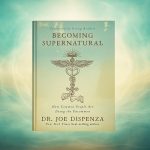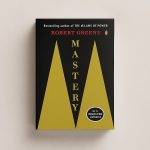Outlive: The Science and Art of Longevity by Peter Attia and Bill Gifford redefines what it means to pursue a long and healthy life. Moving beyond the traditional “wait‑until‑you’re‑sick” model, Outlive by Peter Attia and Bill Gifford presents Medicine 3.0, a proactive approach that anticipates and addresses the Four Horsemen of chronic disease decades before symptoms strike. Drawing on cutting‑edge science, rigorous clinical experience, and deeply personal insights, the authors offer a blueprint for maximizing both lifespan and healthspan through targeted exercise, personalized nutrition, optimized sleep, emotional well‑being, and advanced diagnostics. Packed with actionable strategies and compelling stories, this book empowers readers to take control of their future and live vibrantly into old age.
1. Introduction to Outlive by Peter Attia and Bill Gifford
Outlive by Peter Attia and Bill Gifford is both a manifesto and a manual for rethinking health from the ground up, with the explicit goal of extending not just lifespan, but healthspan – the portion of life lived free from chronic disease and major disability. Written by longevity physician Peter Attia, with journalist Bill Gifford, the book challenges prevailing models of healthcare that predominantly react to disease. Instead, Attia proposes Medicine 3.0, a proactive and personalized approach, rooted in prevention, continuous monitoring, and rigorous lifestyle strategy.
The book’s premise is upfront: modern medicine’s greatest victories – sanitation, antibiotics, vaccines, and emergency care – solved the problems of early mortality, but they were not designed to combat the slow‑burn diseases that now dominate aging populations: cancer, cardiovascular disorders, metabolic diseases, and neurodegeneration. Attia argues that our current medical system is ill‑suited for these 21st‑century killers.
Drawing from 25+ years of clinical experience, sports science knowledge, and personal reflections, Attia offers a framework to optimize physical and mental performance, preserve function into advanced age, and dramatically lower the odds of succumbing to chronic disease prematurely.
2. Author Biographies
Peter Attia, MD
– Background: Canadian‑born physician, trained as a surgeon at Johns Hopkins Hospital. Completed fellowships in surgical oncology at the NIH’s National Cancer Institute.
– Career Shift: Left surgery due to frustration with reactive care, retrained in applied mathematics, built financial modeling experience at McKinsey & Company, then returned to medicine to found a practice focused exclusively on longevity science.
– Expertise: Integrates preventive medicine, strength & conditioning, nutrition science, biomarker tracking, and mental health in patient programs.
– Notable Platforms: Host of The Drive podcast; widely recognized in the performance‑longevity space.
Bill Gifford
– Career: Veteran journalist and author specializing in health, science, and sports.
– Publications: Co‑wrote Spring Chicken, exploring anti‑aging science.
– Role in Outlive: Shapes scientific and clinical depth into accessible, coherent narratives.
3. Core Thesis: Medicine 3.0
Attia contrasts Medicine 2.0 (reactive care) with Medicine 3.0 (proactive care):
– Medicine 2.0 waits for disease symptoms and then intervenes with surgery or drugs.
– Medicine 3.0 anticipates likely causes of future mortality and disability decades before symptoms emerge.
The guiding principle: prevention is an active, data‑driven, and lifelong practice, customized for the individual’s unique risk profile.
Key features of Medicine 3.0:
– Earlier and more frequent screening using advanced diagnostics.
– Aggressive risk‑factor modification (e.g., lowering ApoB to reduce cardiovascular disease).
– Personalized fitness and nutrition protocols.
– Prioritization of mental resilience and sleep.
– Long‑term planning framed by The Centenarian Decathlon.
4. The Centenarian Decathlon
Outlive by Peter Attia introduces this metaphor for building and maintaining the capabilities needed to thrive into one’s later decades, not just survive.
It’s not literal athletics; rather, it’s a checklist of physical tasks and resilience markers people should aim to still perform at age 100.
Examples:
– Carrying two heavy grocery bags up a flight of stairs.
– Getting off the floor without using hands.
– Walking briskly for half a mile.
– Lifting grandchildren.
– Maintaining balance while turning or stepping over obstacles.
By identifying these future functional goals, the reader works backward to design today’s training plan.
5. The Four Horsemen of Chronic Disease
Attia’s framework focuses on preventing or delaying the onset of the four main drivers of mortality after midlife:
5.1. Cardiovascular Disease (CVD)
– The Problem: 1 killer globally.
– Risk Drivers: High ApoB, hypertension, smoking, insulin resistance.
– Prevention:
– Keep ApoB as low as feasible through diet, lifestyle, and – if needed – medications (statins, PCSK9 inhibitors).
– Optimize blood pressure early.
– Incorporate regular aerobic and zone 2 cardio to strengthen heart and vascular health.
5.2. Cancer
– Complexity: Highly variable disease with multifactorial causes.
– Approach:
– Early screening using colonoscopy, mammography, PSA, low‑dose CT for lung cancer in at‑risk former smokers.
– Lifestyle: minimize carcinogen exposure (tobacco, processed meats, excess alcohol), maintain exercise, leverage antioxidant‑rich diet.
5.3. Neurodegenerative Diseases
– Focus: Alzheimer’s, Parkinson’s, vascular dementia.
– Strategies:
– Control cardiovascular risk factors early (as brain and vascular health are tightly linked).
– Stimulate neuroplasticity via cognitive challenges and continued learning.
– Prioritize sleep quality (deep & REM cycles crucial).
5.4. Metabolic Dysfunction
– Hallmark: Insulin resistance, type 2 diabetes, obesity.
– Interventions:
– Control glucose with diet (time‑restricted eating, limited refined carbs).
– Strength training to preserve muscle mass and improve insulin sensitivity.
– Regularity in exercise over intensity alone.
6. Pillar I: Nutrition
Attia rejects any one‑size‑fits‑all diet, advocating instead:
– Comprehensive biomarker tracking (blood glucose, lipid profile, inflammatory markers).
– Adjusting macronutrient and calorie composition based on personal goals and reactions.
– Tools:
– Low‑carb/keto for insulin resistance.
– Higher‑carb approaches for endurance athletes with high energy expenditure.
– Time-restricted eating if sustainable.
He emphasizes nutritional biochemistry literacy over fad compliance, advising practical iteration rather than ideological allegiance.
7. Pillar II: Exercise as the Most Potent Longevity Drug
Outlive by Peter Attia deems exercise the single most powerful intervention for overall longevity – more impactful than nutrition or medication in isolation.
Training recommendations:
– Zone 2 Cardio: Low‑intensity endurance (e.g., brisk walking, cycling) for mitochondrial health.
– VO₂ Max Intervals: High‑intensity bursts to push cardiovascular ceiling.
– Strength Training: 2–4 sessions weekly for muscle retention and bone density.
– Stability and Balance Work: Daily integration – yoga, single‑leg stands, agility drills – to prevent falls, a major cause of disability in older adults.
8. Pillar III: Sleep
– Sleep deficits exacerbate cardiovascular disease, insulin resistance, and cognitive decline.
– Action steps:
– Consistent bedtime/wake schedule.
– Cool, dark, quiet sleep environment.
– Address sleep apnea if present.
– Limit caffeine past early afternoon.
9. Pillar IV: Emotional Health
Attia shares personal struggles with emotional burnout, perfectionism, and strained relationships, underscoring that mental health is inseparable from physical longevity.
He encourages:
– Therapy or coaching to process trauma and improve self‑awareness.
– Mindfulness practices to reduce stress burden.
– Building and maintaining emotional connections.
10. Diagnostics and Monitoring
Medicine 3.0 depends on early and continual measurement:
– Baseline lab panels annually (lipids, inflammatory markers, metabolic panel).
– Imaging when indicated (e.g., coronary artery calcium scan).
– Wearable tracking (sleep, heart rate variability) if usable without obsession.
11. Shifting from Lifespan to Healthspan
Outlive by Peter Attia frames longevity success not in raw years, but in maximizing functional years free from chronic pain and dependency.
The litmus test: Will you remain physically and mentally capable deep into your 80s, 90s, and beyond?
12. Philosophical Takeaways
– Longevity is not about chasing immortality – it’s about aligning with the probable possible, given personal genetic and environmental context.
– The goal is to die young… as late as possible.
– Pursue marginal gains yearly – compounding small improvements in health produces massive long‑term dividends.
13. Step‑by‑Step Road Map
- Know Your Risks – Identify genetic predispositions and environmental exposures.
- Track Baselines – Measure, document, and compare over years.
- Target the Four Horsemen – Create an individualized risk‑reduction plan.
- Build Physical Capacity – Invest in strength, endurance, and balance.
- Protect the Mind – Sleep, learn, challenge, connect.
- Commit for Life – Make it the new default, not a temporary project.
14. Conclusion
Outlive by Peter Attia is less “anti‑aging” and more “pro‑future‑self.” It decentralizes the idea that fate or genetics alone dictate health outcomes, replacing it with a toolkit of preventive strategies that can be applied decades before traditional medicine would intervene.
Attia’s call to action is clear:
– Don’t wait for symptoms.
– Think decades ahead.
– Live today to earn your healthiest possible future.
If you found this summary helpful, please share it or leave a comment below.













